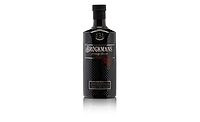Sponsored Content
Sip, Sip, Hooray: The Rise of Eco-Friendly Straws

Straws have had quite a moment in the spotlight recently. Many of us have stumbled across an article (or two) mentioning restaurants that no longer provide plastic straws. There has even been coverage of various states that have banned them. This newfound approach to sustainability is paving the way for the new accessory of the year – reusable straws.
How exactly did this obsession begin, and how is it impacting the packaging world today?
It Started with a Mint Julep…
Straws have made appearances throughout history, but they’re often traced back to 1888 when the patent was officially filed. While sipping a mint julep on a hot summer day through a piece of ryegrass, Marvin Stone realized the piece of grass started to fall apart in his drink. Ryegrass was commonly used in place of straws, but Stone decided it was time to create something more longlasting. Using strips of paper wrapped around a pencil and glued together, the straw was born. By 1890, the design was patented and being mass-produced.
Development didn’t stop there – further improvements were made in the 1930s by inventor, Joseph Friedman. While watching his daughter struggle to sip a milkshake through a straw, he thought a pliable option was needed. Friedman changed up the design by using a standard screw placed inside of a straw and then wrapped floss tightly around the two, leaving indentations that allowed the straw to bend without breaking.
Paper, Plastic, Now What?
As for materials, paper ruled the straw market until the early 1960s. While it got the job done, paper still degraded when it absorbed enough liquid. Then came the reign of the plastic straw – plastic added the longevity factor that was missing, and it also happened to have fewer costs associated with production. With the increased durability of plastic, paper straws became all but extinct by the mid-seventies, paving the way for plastic straws to become one of the many disposable products being mass-produced. As the popularity of to-go cups rose, the fact that plastic straws didn’t tear or rip when pushed through plastic lids was just another reason to jump on the bandwagon. But now paper, among other alternative materials, is making the comeback of the century. You can even find straws made from unconventional materials like hay, bamboo, metal, glass, and more. The reusable straw has become quite popular and even touted by some as “... a gateway purchase that can start people on their journey to sustainability.”
Just like fashion trends, material trends seem to go through a continuous life cycle. It’s important to keep this in mind when testing and trying out new materials. Sometimes, it can be beneficial to revisit the materials previously used for products. With today’s technology, those materials could be utilized and improved to become even better than before!
Want to stay in the know on all things packaging? Click below to check out our Fundamentals of Beverage Technology course where you can learn how to choose the right packaging materials for your beverage.
Looking for a reprint of this article?
From high-res PDFs to custom plaques, order your copy today!





